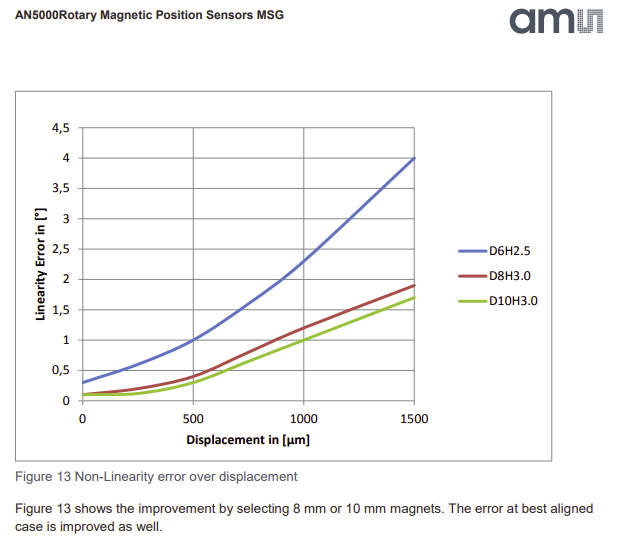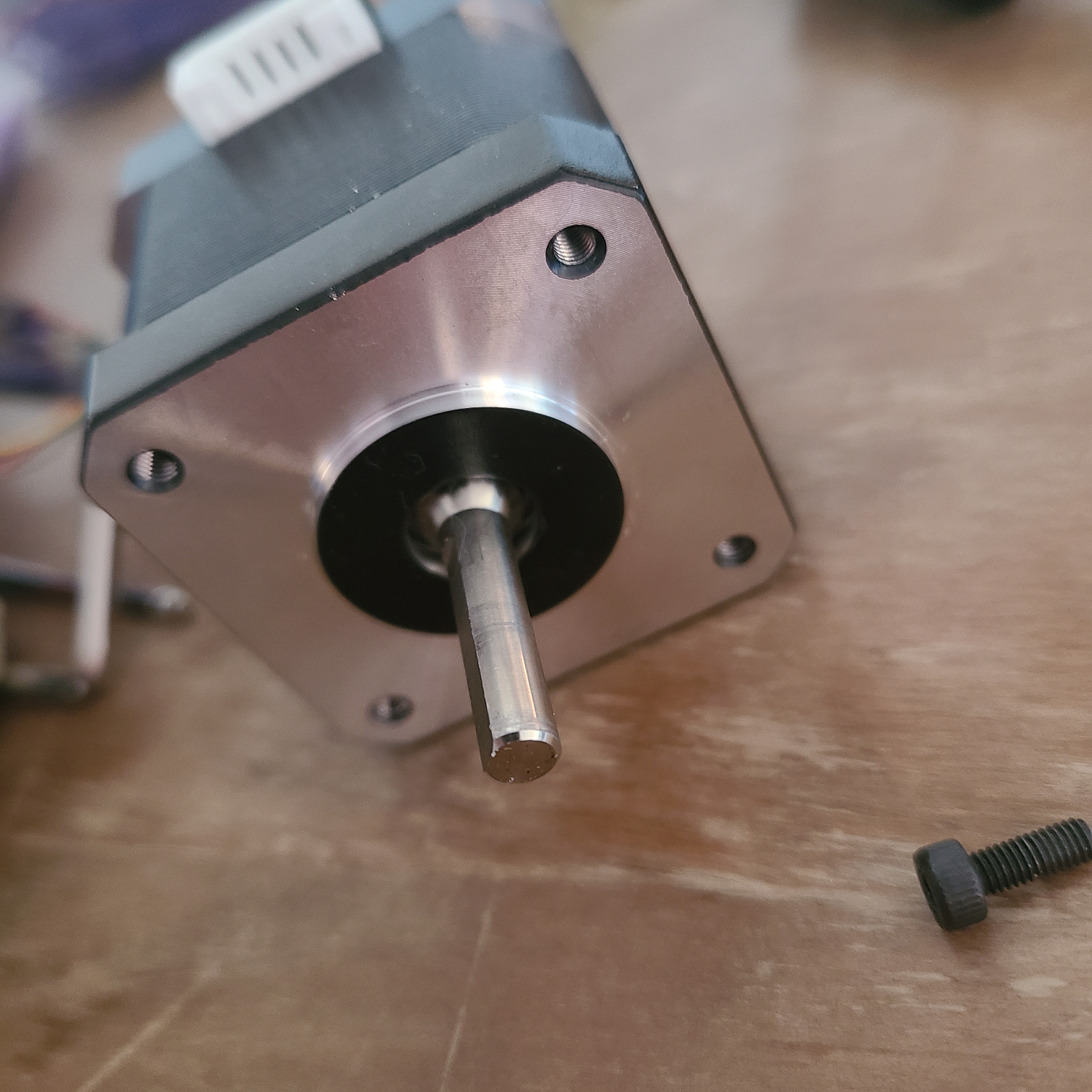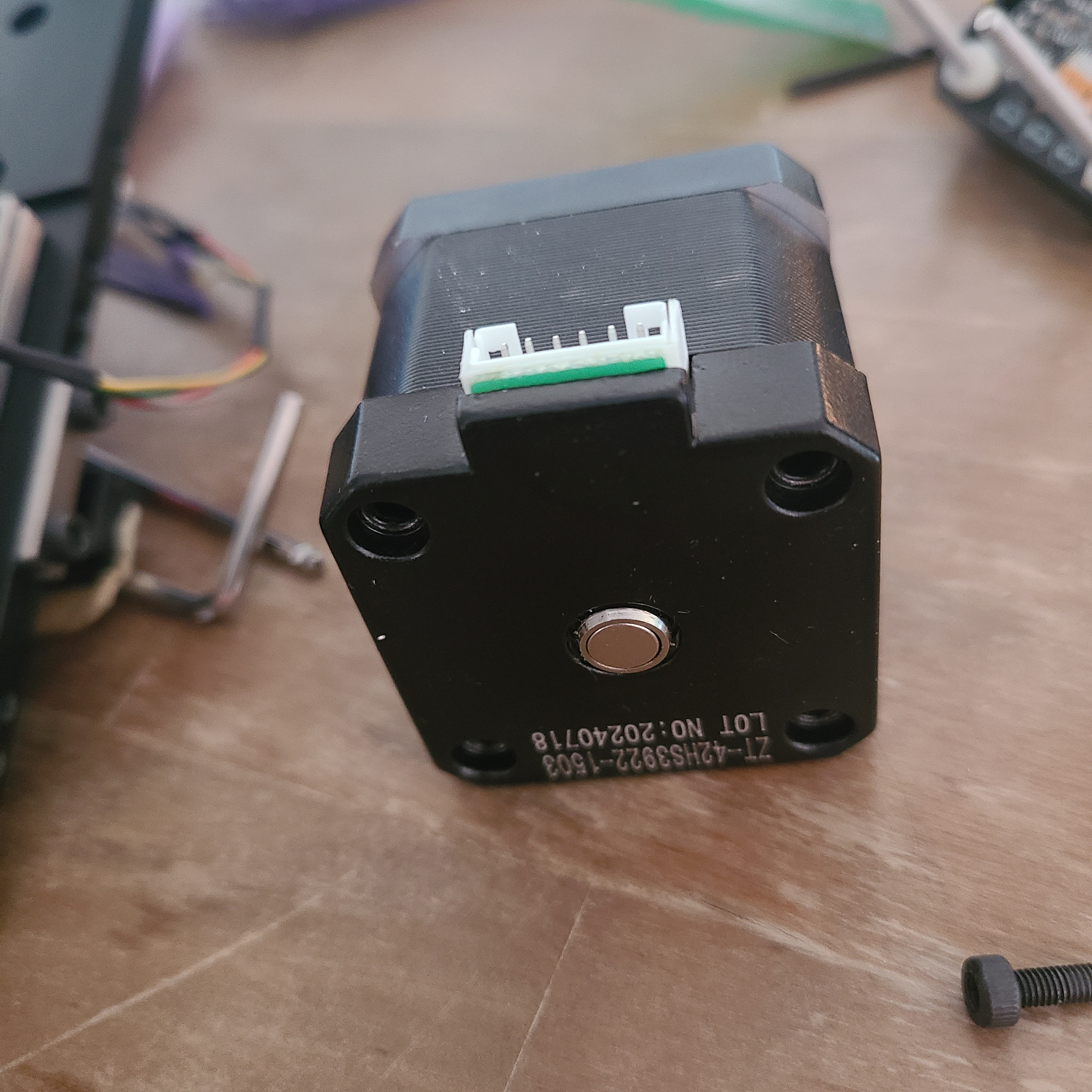1HCL compatibility question
-
@wayneosdias I took a look at your schematic. The TMC5160 needs external mosfets to drive the stepper motors. For small motors the TMC2240 would be better, if you don't mind the max VIN voltage being about 36V.
-
@ironhydroxide check the max temperature the motor will get to and look at the specs of the magnets. We use high temperature magnets for mounting on the motor shaft (which is not needed in many cases but could help if running hot). A slightly wider diameter magnet will work slightly better for the same flux density, up to about 10mm see this figure from the AMS application note:

We chose a 6mm magnet because that fits even in recessed shaft NEMA 17 motors
-
@T3P3Tony Good call, I didn't think about heat. The current motors never get above 40c, a thinner might get hotter due to the same energy in a smaller package (or less efficient), will have to test.
Magnets are all rated to 54c and 80c depending on diameter so I think/hope I'll be fine there.for the widest use case, the 6mm makes perfect sense.
I'm just on the far end of the curve, so I get(have) to look at all options, and if a 10mm magnet is more accurate that can't hurt if it also gives more space to work with. -
@ironhydroxide its more that a 10mm magnet that is thinner and has a lower flux density may match the thicker 6mm magnet in performance.
-
@T3P3Tony OH, thanks for explaining that. Magnets are magic to me.
-
@dc42 yes thanks re 2240.
Re motor/magnets. I have purchased every flavor of the MKS 42Servo B C D and some diff/similar control boards from btt. They all kinda initially work but would become unstable at some point, overshoot/correct and or lose their 'mind' requiring an in situ recalibration. These were just the control boards mounted to the back of old nema17 motors with magnets glued to the shaft.I then tried a motor/control board combo of MKS servo D and it has worked very well in terms of long term stability. When I installed the motor, I noticed the drive side of the shaft. It appears to be an 8mm shaft turned down to 5mm. Taking the control board off looking at the non drive of the shaft and it appears to be milled with the magnet recessed into it. Or maybe the magnet is banded to the shaft? What ever may be the case, the fb/encoding of this controller/motor combo has been rocks solid.
Just food for thought


-
@wayneosdias yes a pocket on the back of the motor shaft is ideal.
-
@T3P3Tony @dc42
I was able to get one of those 12mm off the shelf motors in hand, and played around with it and the duet Magnetic encoder board.With correct magnet spacing and the encoder thickness I have ~6mm clearance from board face (on motor side) with minimal modifications to my system.
The mag encoder board is a 1.5mm, so that means max component height of 4.5mm on the "back" side of the board, (and on the "front" side 2mm) if the same is used.Do you think it'd be feasible to get all the components on the board with that restriction? In a design that Duet would be able to market/sell? Or are my systems requirements a bit too niche?
-
@ironhydroxide Q wasn't directed at me, but i'll throw out a quick fix that could potentially be a future Duet accessory. Ditch the Duet ribbon header/cable and replace it with a FPC BOB. The big ribbon/header connector Duet uses doesn't really buy you much as spi is limited in signal distance any away. Put a FPM connectyor on the Mag board and afix the driver board 90deg to the motor body. That is if there is room on one of the sides of the motor body.
-
@ironhydroxide lets continue this discussion on email, please drop me a line tony(at)duet3d com
-
@T3P3Tony Email sent, thanks for your help.